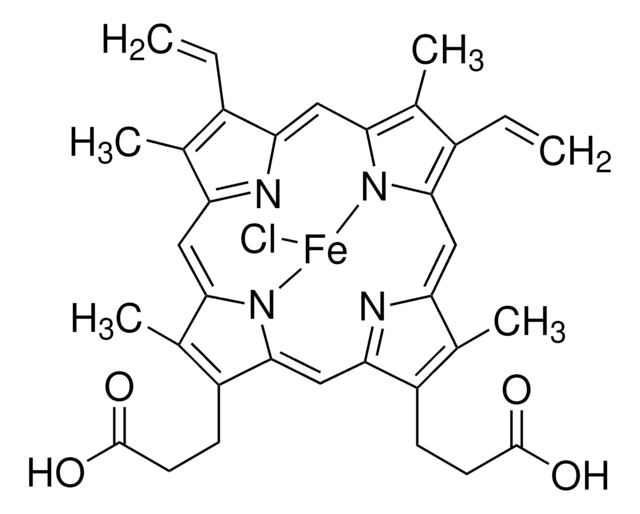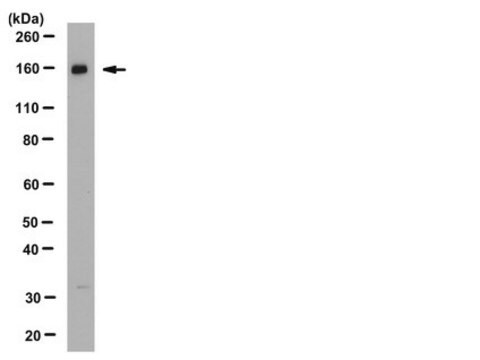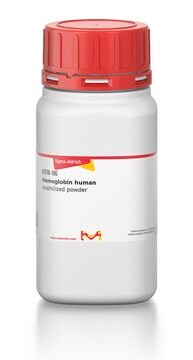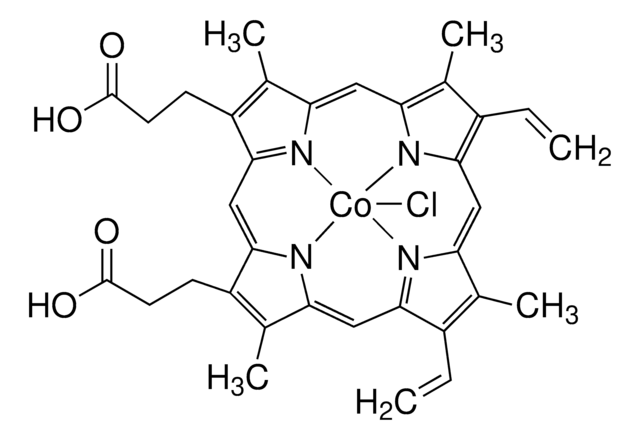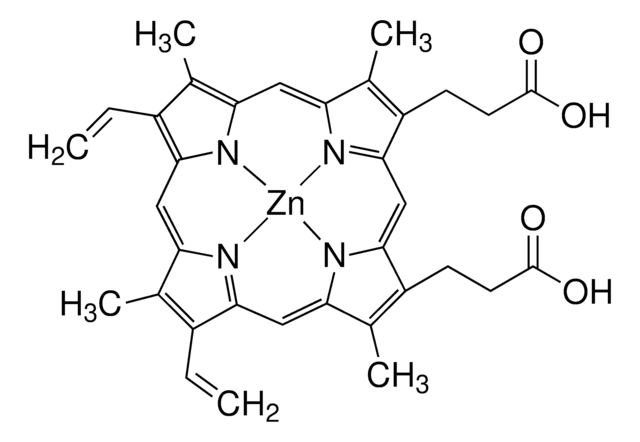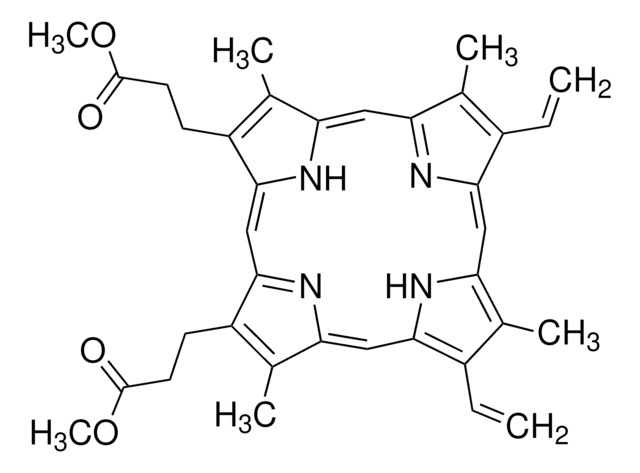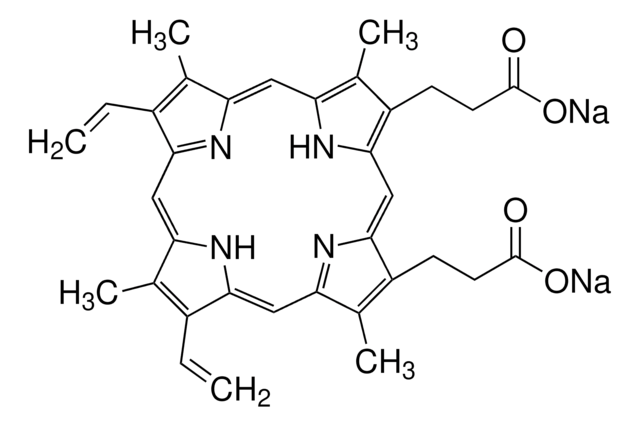MAK316
Heme Assay Kit
sufficient for 250 colorimetric tests
Sign Into View Organizational & Contract Pricing
All Photos(1)
About This Item
UNSPSC Code:
12161503
NACRES:
NA.84
Recommended Products
detection method
colorimetric
relevant disease(s)
hematological disorder
storage temp.
2-8°C
Related Categories
General description
Heme is a member of the porphyrin family. It is synthesized in both mitochondria and cytoplasm, and is a key prosthetic group for various essential proteins such as hemoglobin, cytochromes, catalases and peroxidases. Free heme, which can be released from hemoglobin following hemolysis, is pro-inflammatory and contributes to iron-derived reactive oxygen species. Heme determination is widely practiced by researchers of various blood diseases.
Features and Benefits
Compatible with high-throughput handling systems.
Suitability
Suitable for the quantitative determination of heme and evaluation of drug effects on heme metabolism in a variety of biological samples such as blood, plasma, serum, urine, and heme carrying enzymes.
Principle
Heme assay is based on an aqueous alkaline solution method, in which the heme is converted into a uniform colored form, producing a colorimetric (400 nm) result, directly proportional to the heme concentration in the sample. The optimized formulation reduces interference and exhibits high sensitivity. One mg/dL heme equals 15.3M, 0.001%, or 10ppm. The kit has a linear detection range of 0.6–125M heme in a 96 well format.
Signal Word
Warning
Hazard Statements
Precautionary Statements
Hazard Classifications
Aquatic Acute 1 - Aquatic Chronic 2 - Eye Irrit. 2 - Met. Corr. 1
Storage Class Code
8B - Non-combustible, corrosive hazardous materials
WGK
WGK 3
Flash Point(F)
Not applicable
Flash Point(C)
Not applicable
Certificates of Analysis (COA)
Search for Certificates of Analysis (COA) by entering the products Lot/Batch Number. Lot and Batch Numbers can be found on a product’s label following the words ‘Lot’ or ‘Batch’.
Already Own This Product?
Find documentation for the products that you have recently purchased in the Document Library.
Customers Also Viewed
Hemopexin therapy reverts heme-induced proinflammatory phenotypic switching of macrophages in a mouse model of sickle cell disease.
Vinchi F, et al.
Blood, 127(4), 473-486 (2016)
Role of heme and heme-proteins in trypanosomatid essential metabolic pathways.
Tripodi K E, et al.
Enzyme Research, 2011 (2011)
Alfonso Rubio-Navarro et al.
Frontiers in pharmacology, 10, 740-740 (2019-07-25)
Massive intravascular hemolysis is associated with acute kidney injury (AKI). Nuclear factor erythroid-2-related factor 2 (Nrf2) plays a central role in the defense against oxidative stress by activating the expression of antioxidant proteins. We investigated the role of Nrf2 in
George T Mukosera et al.
Nitric oxide : biology and chemistry, 79, 57-67 (2018-07-31)
Dinitrosyl iron complexes (DNICs) are important intermediates in the metabolism of nitric oxide (NO). They have been considered to be NO storage adducts able to release NO, scavengers of excess NO during inflammatory hypotensive shock, and mediators of apoptosis in
Beatriz Alvarez-Castelao et al.
eLife, 9 (2020-04-25)
We examined the feedback between the major protein degradation pathway, the ubiquitin-proteasome system (UPS), and protein synthesis in rat and mouse neurons. When protein degradation was inhibited, we observed a coordinate dramatic reduction in nascent protein synthesis in neuronal cell
Our team of scientists has experience in all areas of research including Life Science, Material Science, Chemical Synthesis, Chromatography, Analytical and many others.
Contact Technical Service
